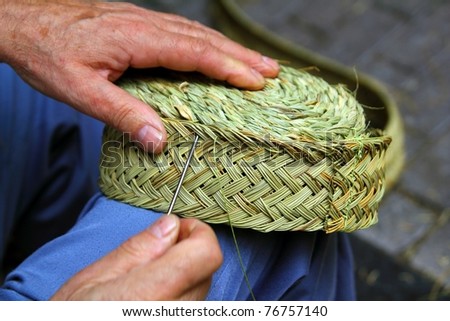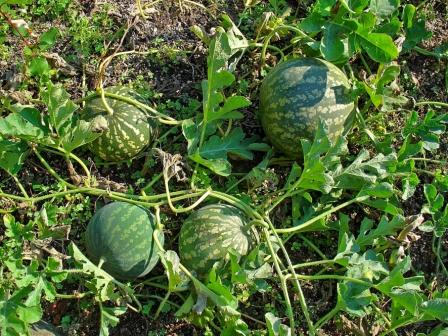Solomon Giwa, Luqman Chuah Abdullah and Nor Mariah Adam (Universiti Putra Malaysia) have published a paper investigating the potential of Egusi seed oil as a potential biodiesel feedstock.
Biodiesel’s acceptance as a substitute for fossil-derived diesel has grown the world over. However, the food-fuel debate over conventional vegetable oils has rekindled research interest in exploring lesser known and minor oil crops. In this work, egusi melon seed oil was studied for the first time as a potential feedstock for biodiesel production. Crude egusi melon seed oil was transesterified using sodium methoxide as the catalyst at 60 °C and an oil/methanol ratio of 1:6 to produce its corresponding methyl esters. Egusi melon oil methyl ester (EMOME) yield was 82%. Gas chromatographic analysis of EMOME showed that it was composed mainly of palmitic, stearic, oleic, linoleic and linolenic esters, which is similar to the profile of sunflower, soybean and safflower oil. All the measured fuel properties of EMOME satisfied both the ASTM D6751 and the EN 14214 biodiesel standards. Fuel properties of EMOME were essentially identical with those of soybean, safflower and sunflower biodiesel. Remarkably, the kinematic viscosity of EMOME was measured to be 3.83 mm2/s, a value lower than most biodiesel fuels reported in the literature. The potential of egusi melon seed oil as a biodiesel feedstock is clearly presented in this study.
The major sources of the world’s energy needs are petroleum, coal and natural gases which are fossil-derived and non renewable. The world, at large, depends on petroleum as the energy source for the transportation sector. Scarcity of traditional petroleum fuels, its over-dependence by nations, increasing emissions of combustion-generated pollutants and their increasing costs have made renewable energy sources more attractive. The world petroleum reserves are finite in nature and declining fast, the production of oil will eventually slow down and plateau.
For over a century now, the use of vegetable oils such as soybean, palm, sunflower, peanut and olive oil as fuel substitutes for fossil-based diesel has been around, with the inventor of the diesel engine Rudolph Diesel being the first to test peanut oil in his compression ignition engine. Biodiesel, defined as the mono alkyl esters of long chain fatty acids obtained from renewable feedstock, such as vegetable oil or animal fats, for use in compression ignition engines . Recently, biodiesel has become more attractive because it is environmentally friendly, derived from renewable resources, biodegradable and non-toxic in nature. It can also be produced from any material that contains fatty acids, either linked to other molecules or present as free fatty acids. Thus, various vegetable fats and oils, animal fats, waste greases, and edible oil processing wastes can all be used as feedstocks for biodiesel production. Biodiesel which has been accepted as a possible substitute of conventional diesel fuel is produced from triglycerides by transesterification with methanol/ethanol and mainly in the presence of a catalyst.
Owing to their availability, various oils have been in use in different countries as feedstocks for biodiesel production. Rapeseed and sunflower oils in Europe, soybean oil in U.S., palm oil in Malaysia and Indonesia and coconut oil in Philippines are being used for biodiesel production. Also, the jatropha tree (Jatropha curcas), karanja (Pongamia pinnata) and mahua (M. indica) are used as major biodiesel fuel sources in India. In spite of this, biodiesel production from conventional vegetable oils (soybean, sunflower, safflower, palm, rapeseed etc.) has progressively stressed food uses, price, production and availability of these oils. Consequently, this has ignited the search for additional regional biodiesel raw materials. With 350 oil-bearing crops having been identified, recent studies on biodiesel from less common or unconventional oils include Moringa oleifera [4], Michelia champaca and Garcinia indica, pumpkin, sea mango and desert date oils.
Cucurbitaceae is a large plant family which consists of nearly 100 genera and 750 species. This plant family is known for its great genetic diversity and widespread adaptation which includes tropical and subtropical regions, arid deserts and temperate locations. Curcubits are known for their high protein and oil content. Seeds of cucurbits are sources of oils and protein with about 50% oil and up to 35 % protein [11]. Specifically for these reasons they are cultivated and consumed world over. “Egusi” (Citrullus colocynthis L.) belongs to the species of the genus Citrullus of cucurbitaceae family, which usually consists of a large number of varieties that are generally known as melons. Egusi (Citrullus colocynthis L.) is among the 300 species of melon found in tropical Africa and it is cultivated for its seeds, which are rich in oil (53%) and protein (28%). The regions of its cultivation are Middle East, West African (Nigeria, Ghana, Togo, Benin) and other African countries for the food in the seeds and as a crop inter-planted with maize, cassava and yam. In Nigeria only, ‘‘egusi’’ is cultivated over an area of 361,000 ha with a production figure of 347,000 tonnes (as seeds) in 2002. It is used both as condiment and thickener in Nigerian local soup, and the industrial scale production of the oil yet to be utilized despite the huge potential. Various studies have reported predominantly high linoleic fatty acid content in egusi melon seed oils. Due to the unsaturated fatty acid composition of its oil, it was reported to resemble that of safflower, corn, cottonseed, sunflower, soybean and sesame oil.
Throughout this study, “egusi” (Citrullus colocynthis L.) has been referred to as “egusi melon” for proper identification and consistency with the literature. The main objective of the present study was to investigate the use of egusi melon seed oil (EMSO) as a potential feedstock for biodiesel production. The fuel properties of the egusi melon oil methyl ester (EMOME) were determined and compared with biodiesel fuels from conventional vegetable oils.
morocco culture,moroccan food,morocco food,moroccan cuisine,morocco beaches,moroccan meal,beaches in morocco,moroccan culture,hercules cave,hercules cave morocco













